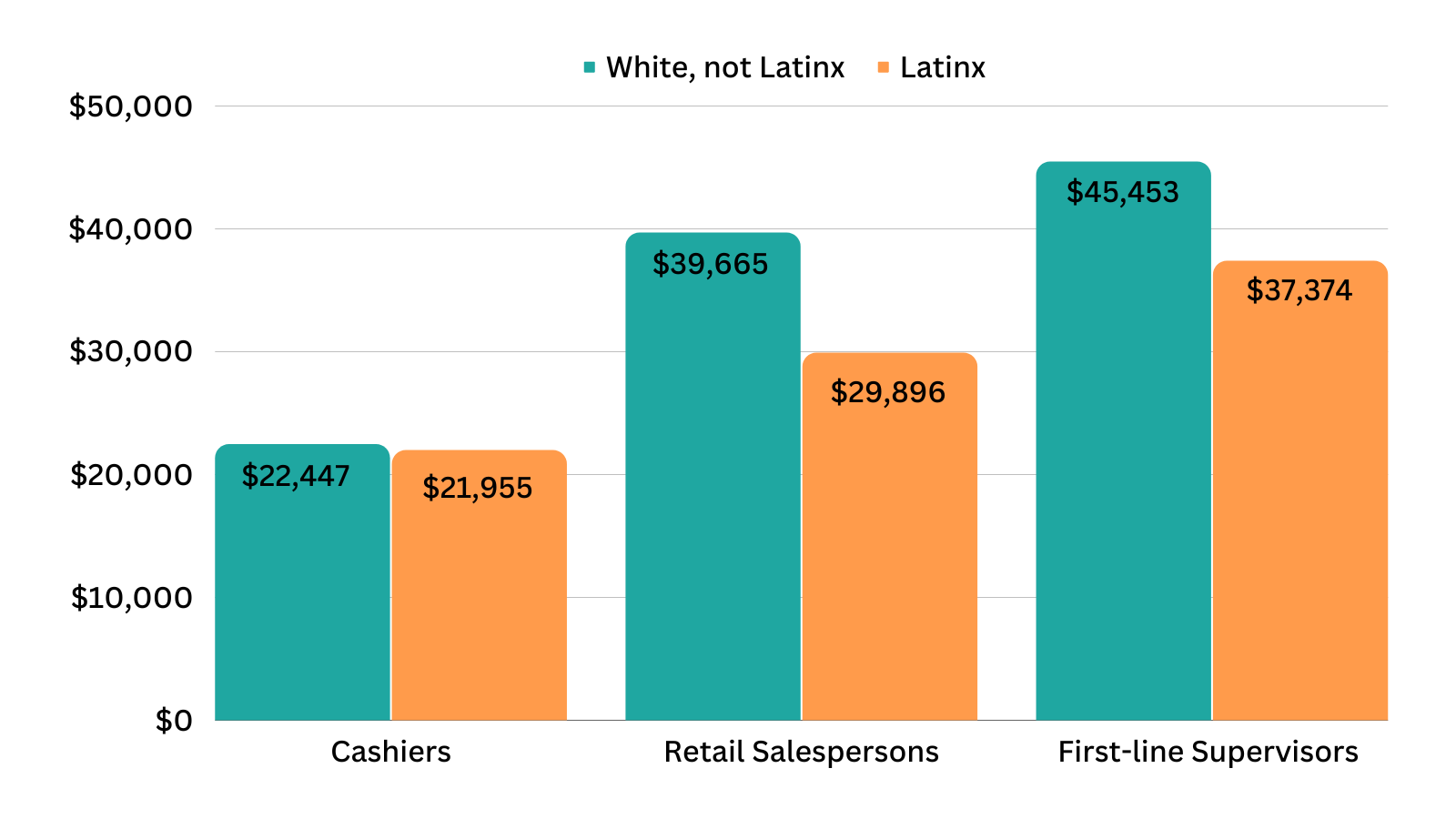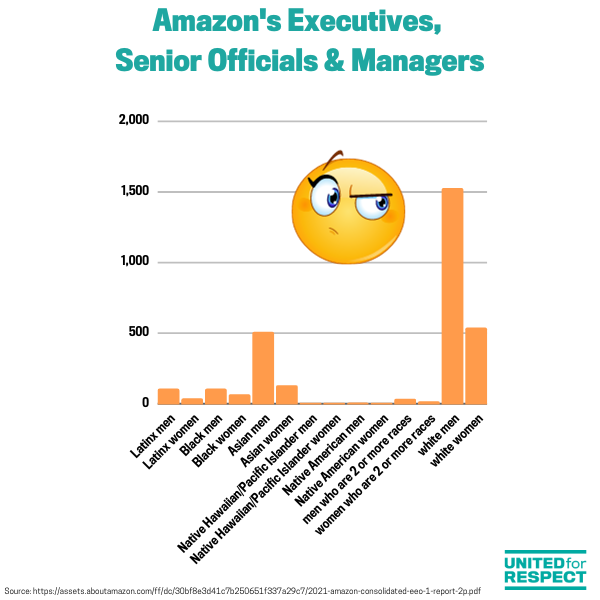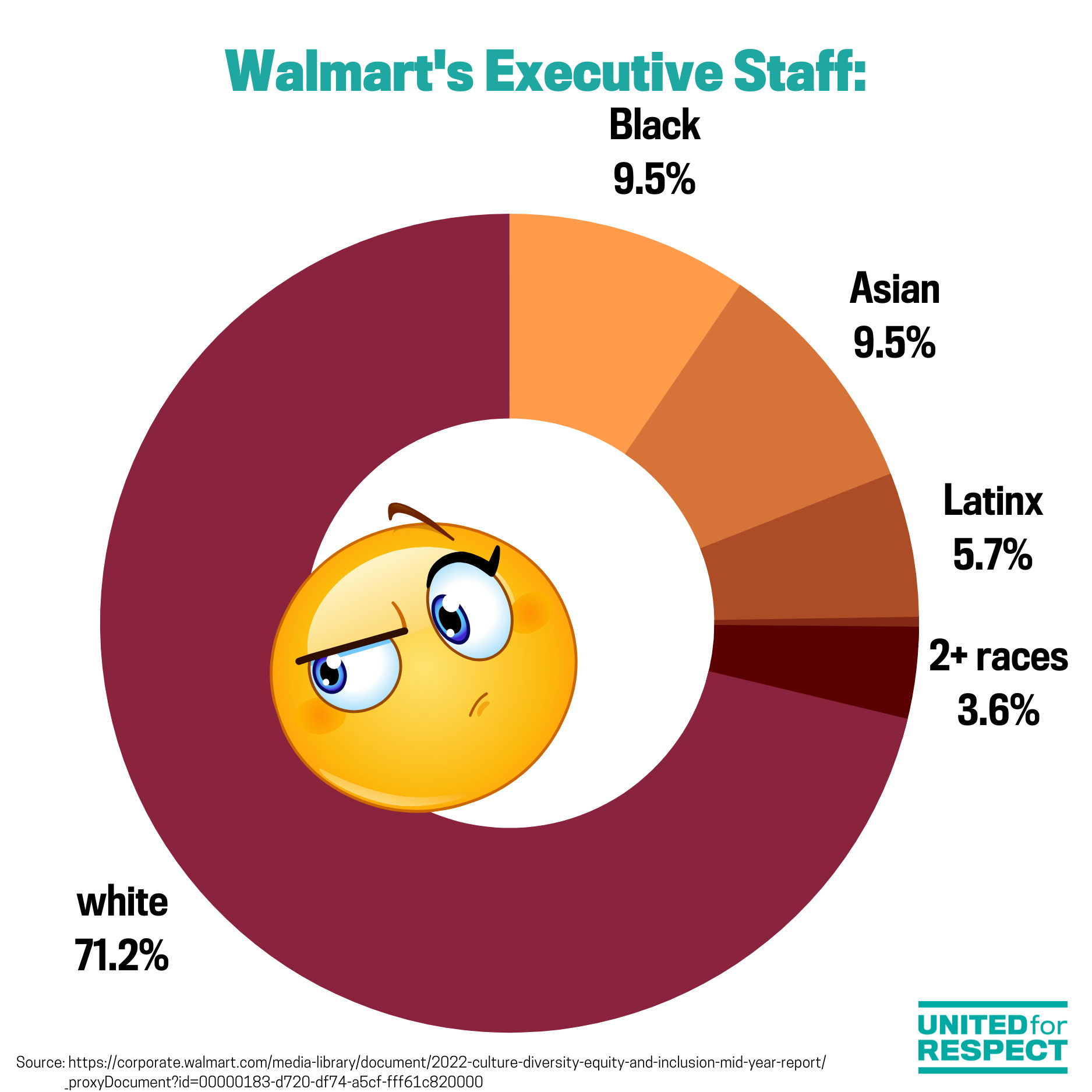A look at disparities in the retail industry:
In honor of Hispanic Heritage month, United for Respect is taking a close look at the experiences of Latinx workers employed by Walmart and Amazon, the two largest private-sector employers in the United States by number of employees.
Of the 16 million people who work retail jobs in the United States, 1.8 million identify as Latinx. Though these workers represent nearly 20% of the total retail workforce, they face occupational segregation and earn less than their white counterparts in the same positions, indicating possible workplace discrimination and racial inequities across the retail industry.
According to the most recent Census data available on the retail workforce, Latinx workers are overrepresented in the lowest paid positions in the industry such as cashier and under-represented in supervisory positions.

Moreover, Latinx retail workers are paid less than their non-Latinx white counterparts employed in the same position. Latinx cashiers, for example, made nearly $500 (or 2.2%) less per year than non-Latinx white cashiers. Pay disparities between non-Latinx white and Latinx employees were even larger for retail salespersons (nearly $10,000 or 28%) and supervisors of retail sales workers (over $8,000 or 20%).

Amazon:
According to Amazon’s most recent data (2022), 24% of the company’s workforce is Latinx and the vast majority of these workers, over 200,000 people, work in fulfillment centers, delivery stations, and other warehousing facilities.
But while Amazon’s logistics and delivery network depends on Latinx workers, these workers are underrepresented in corporate positions. In fact only 9% of Amazon’s corporate employees and only 5% of senior leaders are Latinx.

Walmart:
Walmart is the largest private sector employer in the world with over two million associates globally and nearly 1.6 million workers in the United States.
At Walmart, Latinx workers are overrepresented on store floors, making up 20% of Walmart’s U.S. hourly workforce. Walmart falls short when it comes to Latinx representation in management, with only 10% of their workforce identified as such compared to 59% of whom are white.
There is an even starker contrast in Walmart’s C-suite, with 5.7% of Walmart’s U.S. officers identifying themselves as Latinx as opposed to 72.39% who identify as white.

Disclaimer: While the month we are celebrating is officially called Hispanic Heritage Month, United for Respect recognizes tensions within the community surrounding the term Hispanic and its origins. There are a variety of preferred terms for self-identification used by people throughout the diaspora – and within our own organization. In order to be as inclusive as possible, we are using the term Latinx throughout this resource (while our data sources may have used other terminology).